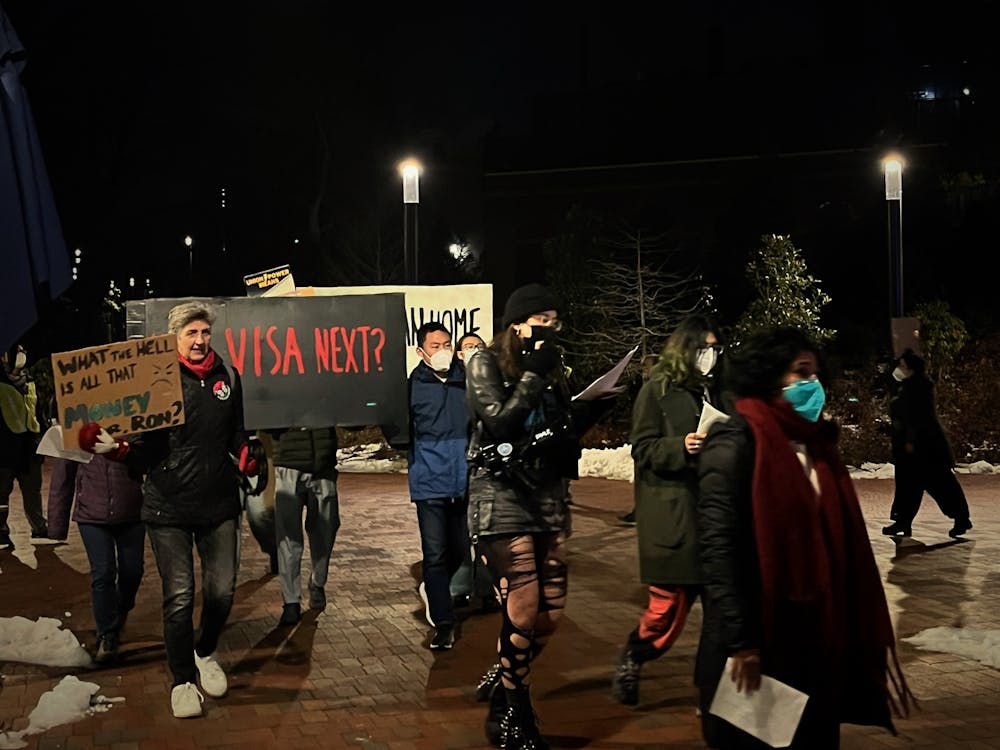Peter Harnik, an alum and the former director of the Trust for Public Land’s Center for City Park Excellence (CCPE), gave a talk titled “Heartfelt Pathways for a Heritage City” at Cafe Azafrán on Tuesday. He was hosted by the Friends of Maryland’s Olmsted Parks and Landscapes.
Harnik emphasized the importance of city parks, the places where urban Americans get most of their exposure to green spaces, as civic symbols. This is why, he said, we associate New York City so strongly with Central Park and vice versa.
What threatens city parks in the U.S. today, Harnik argued, is the lack of funding and staff that park departments face. Harnik insisted, however, that the major issue facing parks departments is their lack of political clout.
“They don’t have a strong enough cadre of supporters lobbying for them, and of course, they can’t lobby for themselves within their government, so their realism leads them to pessimism and fatalism,” he said.
This, he noted, has consequences for parks advocates, who become frustrated and outraged.
“Neither pessimism nor outrage is a good way to build political strength, attract money or get things done,” Harnik said.
He explained that CCPE’s approach to building political strength is to collect data on city parks.
Sixteen years ago, he said, the city parks movement had virtually no data on city parks, including basic figures like acreage under management or public utilization.
“You can’t have power if you don’t have information,” Harnik said.
Harnik noted that figuring out the economic value a park provides to a city is extremely important. Often, he said, parks directors’ requests for larger budgets are turned down by city councils because the parks directors did not have the data to prove the value they were providing to city residents.
The problem for parks advocates is such a figure cannot be directly observed; it has to be calculated using more concrete data sets which are costly to produce and maintain.
Harnik’s ideal structure in a city is the following: a municipal parks and recreation department to own the land; a citywide park foundation that privately fundraises for the parks; a local affinity organization for every park; and a citywide umbrella organization to represent all the local affinity groups.
According to Harnik, only New York, Philadelphia, Atlanta, Chicago and San Francisco have such structures in the U.S.
Harnik stressed the relationship between parks and public health.
“Parks are integral to our battle against obesity and physical and mental disease,” Harnik said.
Harnik emphasized the importance of understanding why people don’t use parks that currently exist.
The perception of danger, he said, is a common factor that keeps people out of the parks, as well as a simple lack of attractive facilities.
“The more facilities and discrete spaces that can be layered into a park, the more use it can get from people with different interests and skills, and the same with programming,” he said.
As an example, Harnik spoke about the Medical Mile in the Riverfront Park of Little Rock, Ark., where residents can enjoy the traditional functions of a park while learning about health. Harnik suggested Baltimore could do something similar given its status as a hub for medical innovation.
Harnik then explained the benefits of successful greenway projects, such as the Tom McCall Waterfront Park in Portland, Ore., suggesting that something similar can be done along the Jones Falls Expressway.
Harnik concluded by praising Baltimore for its willingness to test new ideas, citing Camden Yards and the Inner Harbor as successful examples. In particular, Harnik cited Patterson Park as a good example of how parks can lead to the revival of the neighborhood.
Jasmine Forbes, a board member of the Friends of Maryland’s Olmsted Parks and Landscapes, told The News-Letter she was pleased with the event and the conversations it spurred.
“It’s very important to talk about parks in Baltimore and providing green space for all residents. Basically, getting everybody of different backgrounds in a room together to have a conversation,” she said.
One attendee asked Harnik if he had examples of park revitalization leading to opportunities for everyone. Harnik replied that there most likely are, but he cautioned against assuming what works or doesn’t work in one city will have the same effects in a different city.





